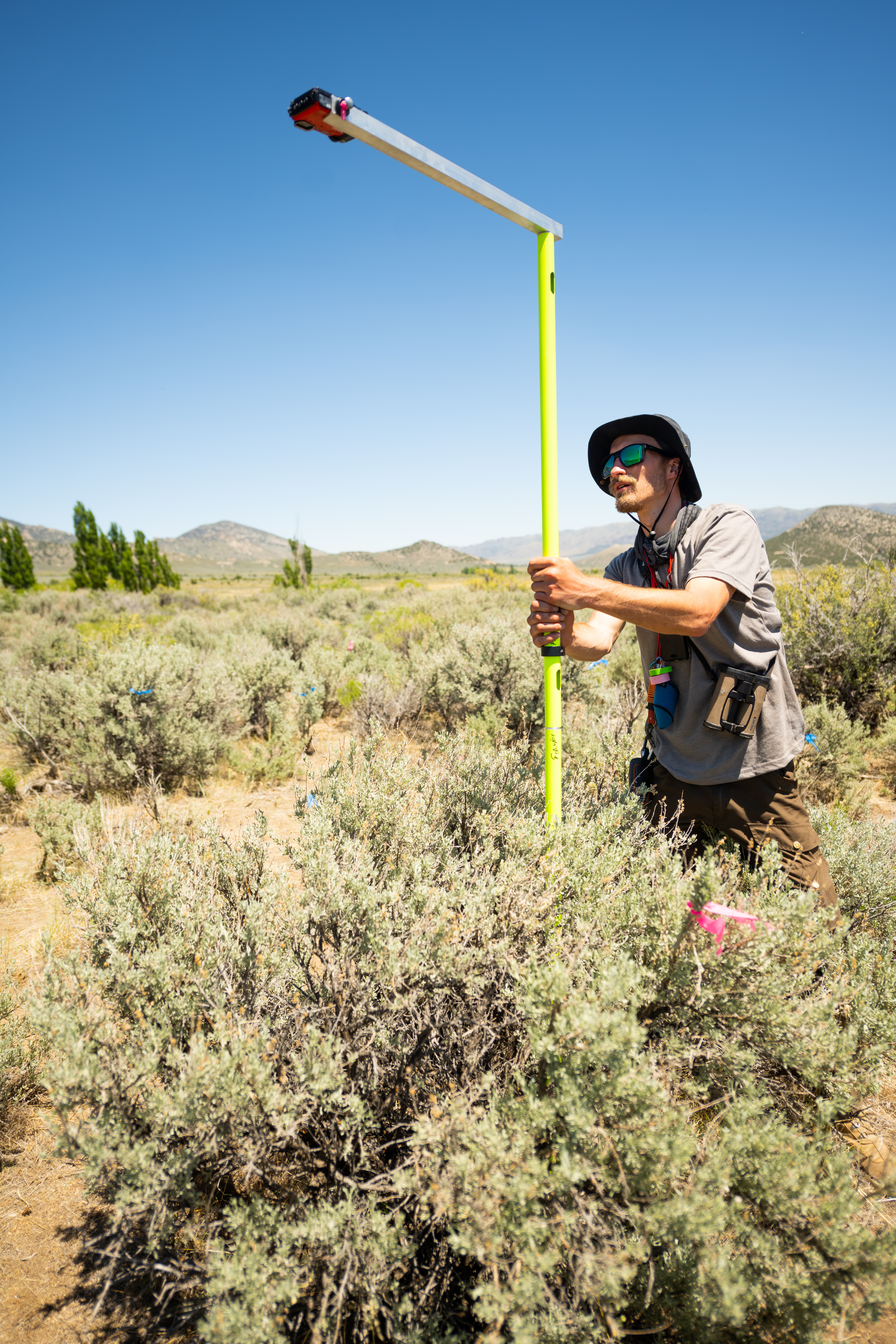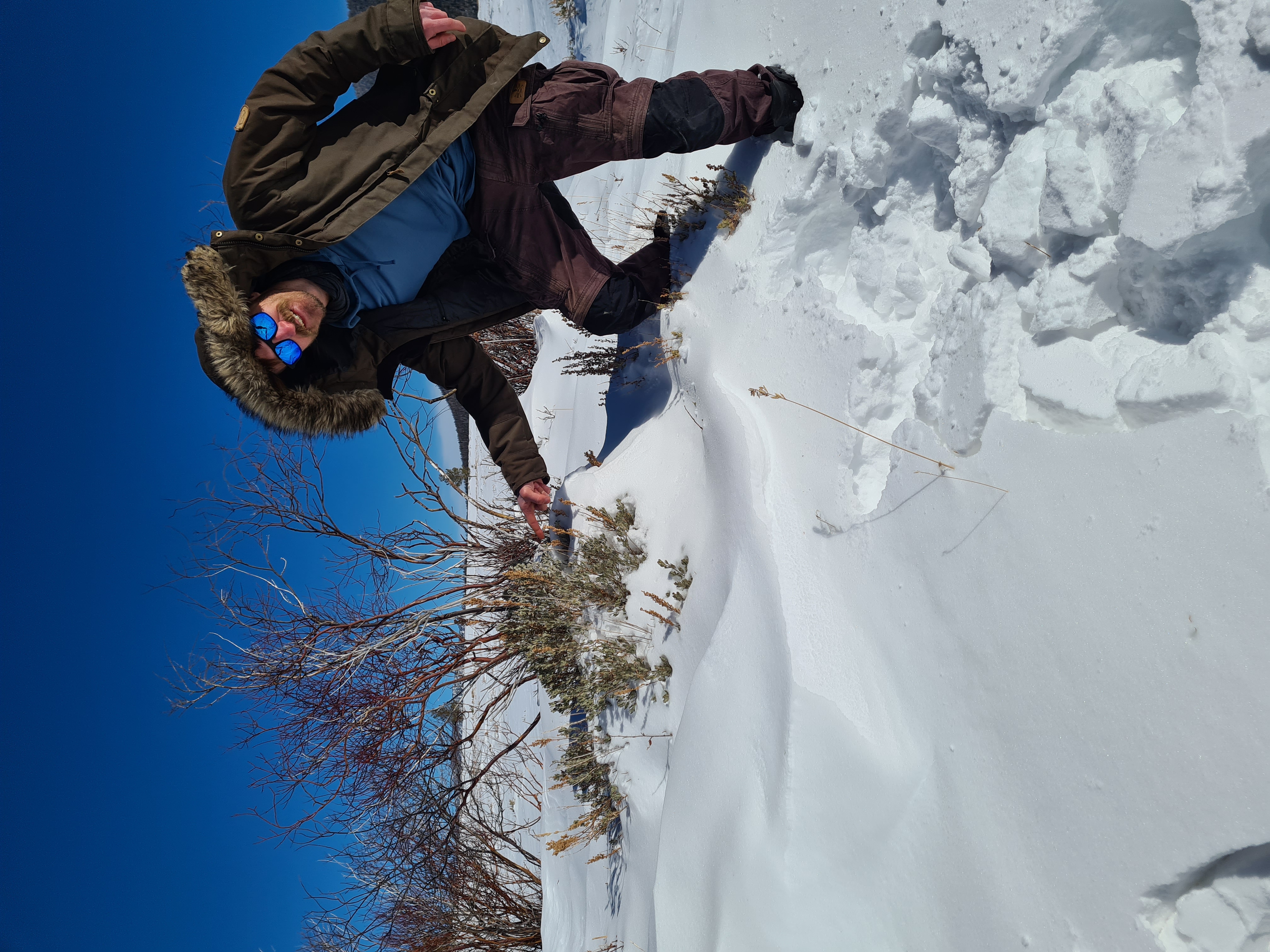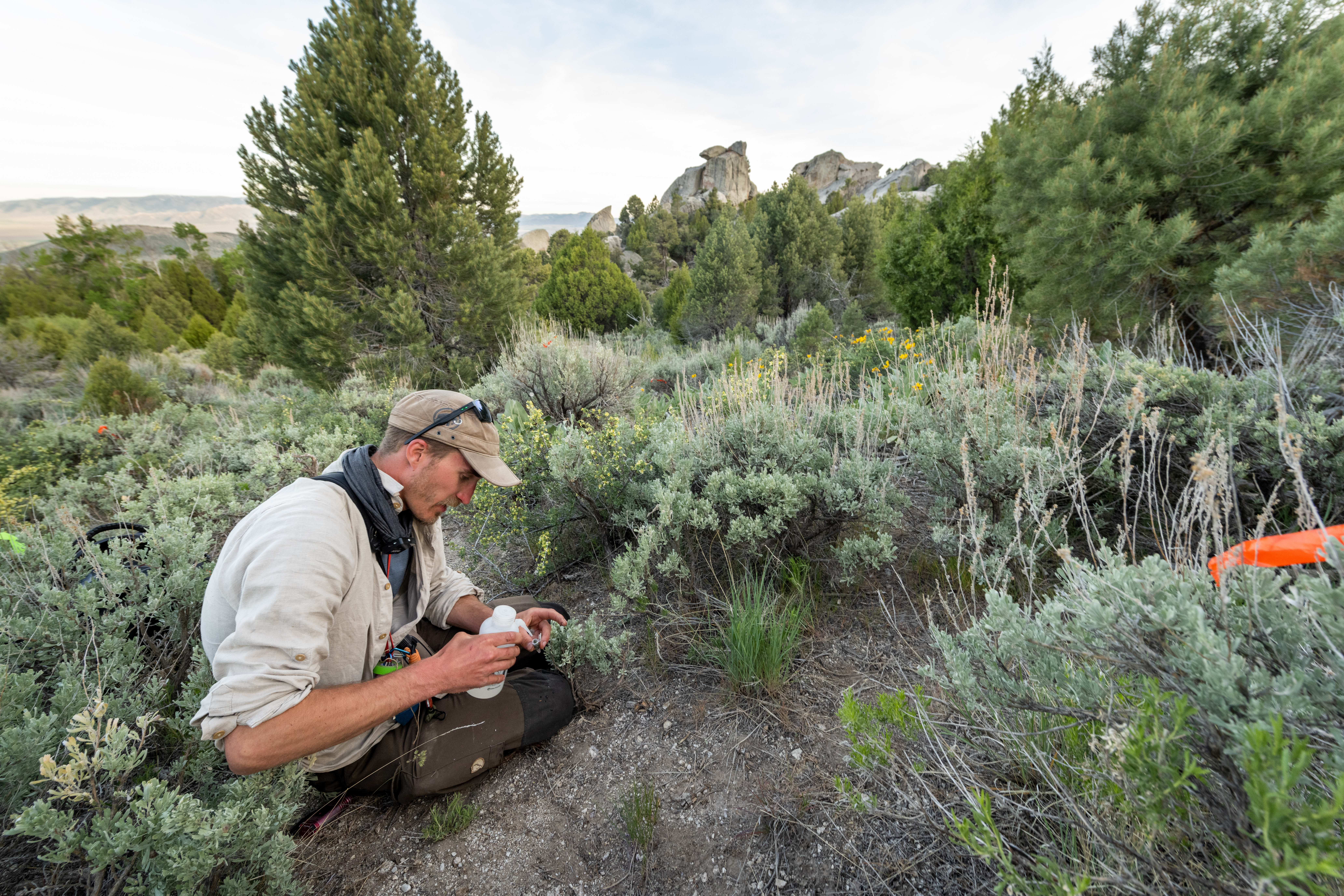Adapting Genomes: Sagebrush Show Resilience in More Ways than One
February 16, 2023Photo by U of I Creative Services

Even in the most extreme environments where the soil is shallow and water is scarce, plants survive and thrive.
It was high above the tree line in the Austrian Alps near his home where Lukas Grossfurthner's fascination with plants germinated. Well acquainted with the harsh mountain conditions, he marveled at plants growing through craggy rocks where little other life exists.
"When you climb those mountains, you see that the environment is oftentimes not in your favor. But those plants hang out there," he says.
Grossfurthner’s passion for plants grew as he studied biology at the University of Vienna. As he followed his professors through mud, snowfields and rain, he was drawn to species with complex evolutionary relationships. For his master’s thesis, he disentangled how species of an alpine plant group are related to each other.
In Vienna, he specialized in unconventional, polyploid species. Most genomic tools (molecular methods and computer programs used to study genomes) are developed for diploid species, like humans. But the alpine plants he studied are polyploid, which means they have more than the typical two sets of chromosomes.
He wanted to continue applying genomic methods to plants with different ploidies and discovered a Ph.D. position studying big sagebrush (Artemisia tridentata), offered by Paul Hohenlohe and Lisette Waits, who he recognized for their contributions to the field.
Artemisia tridentata and its subspecies presents the ideal challenge for Grossfurthner: not only do they thrive in harsh environments, but their complicated relationships and polyploidy make them difficult to study using traditional genomic methods.
Not only is studying sagebrush a welcome challenge for Grossfurthner, it’s also a necessary one. Many ecologists consider big sagebrush one of the most important native plants in the western United States. Since its European arrival, a large portion of its range has been depleted, and in the past 20 years alone, it lost 1.3 million acres per year.
Photo by Teresa Palmi
 When sagebrush is lost, the numerous animals that depend on it are left without food and shelter. Oftentimes, invasive plants take the place of sagebrush and make the land more susceptible to wildfire.
When sagebrush is lost, the numerous animals that depend on it are left without food and shelter. Oftentimes, invasive plants take the place of sagebrush and make the land more susceptible to wildfire.
To hone his computational skills working on sagebrush, Grossfurthner eagerly joined the Bioinformatics and Computational Biology (BCB) doctoral program under the guidance of Hohenlohe, Waits and Forest Service research geneticist Bryce Richardson. Studying sagebrush is an important part of GEM3, an ongoing collaborative research program in Idaho that aims to inform natural resource management by studying genetic mechanisms. With funding from NSF, Idaho EPSCoR, and the U of I Stillinger Herbarium, the group can collect and analyze huge quantities of data.
As he studies sagebrush population genomics, he’s discovering key events in their evolution that might guide future conservation efforts.
Some subspecies interbreed and form hybrids, which may or may not harbor beneficial traits for changing environment.
“Some hybrid individuals or populations may have some adaptive advantages for future climates. It’s important to conserve those hybrids to maintain genetic diversity,†he says. But to make things more complicated, big sagebrush underwent "polyploidization events" when it encountered stress, such as temperature oscillations, and duplicated their whole genome - ending up with four complete sets of each chromosome.
"They can't just escape the changing environment," says Grossfurthner. So instead, some plants can duplicate their genome, allowing them to respond more quickly to a wide variety of environmental conditions. Essentially, more copies of each gene make them flexible to change.
As the climate changes and big sagebrush lose more habitat (they've already lost roughly 40%), these polyploidization events may occur more frequently.

Photo by U of I Creative Services
"It’s important to conserve those hybrids to maintain genetic diversity."
Studying the effects of hybridization and polyploidization events will help Grossfurthner and the GEM3 team predict how organisms adapt to the changing environment. It will also help conservationists identify where certain subspecies of big sagebrush will have the most restoration success.
There’s no doubt this scraggly bush is foundational to diverse ecosystems across the western United States. Despite their resiliency, rapid change is challenging big sagebrush as the climate warms, human land use increases, and wildfires tear across the land.
But for some subspecies, perhaps the change isn’t too much. Unlocking the genomic history of these hardy species is key to leveraging their own capacity to adapt to a changing climate.
Article by Kelsey Swenson,
IIDS Scientific Writing Intern